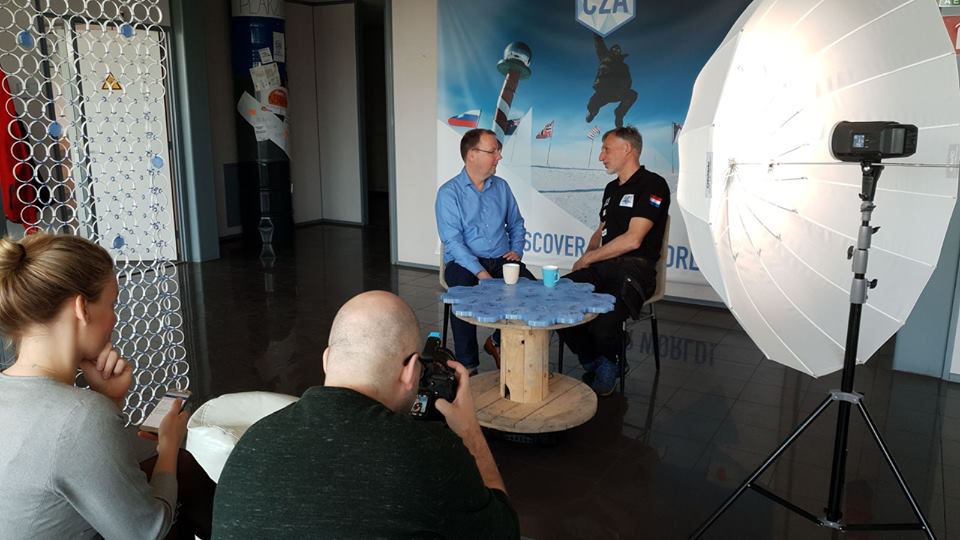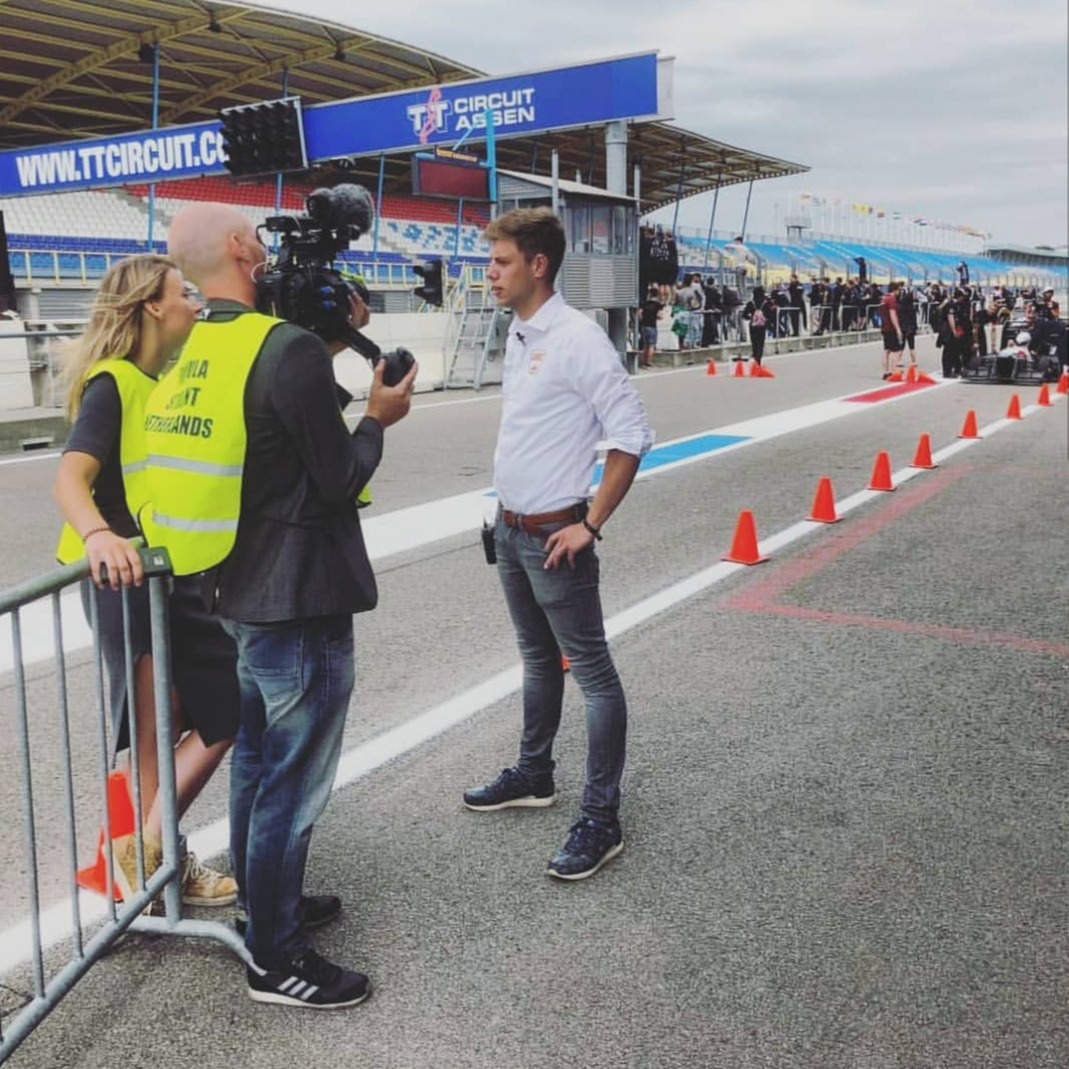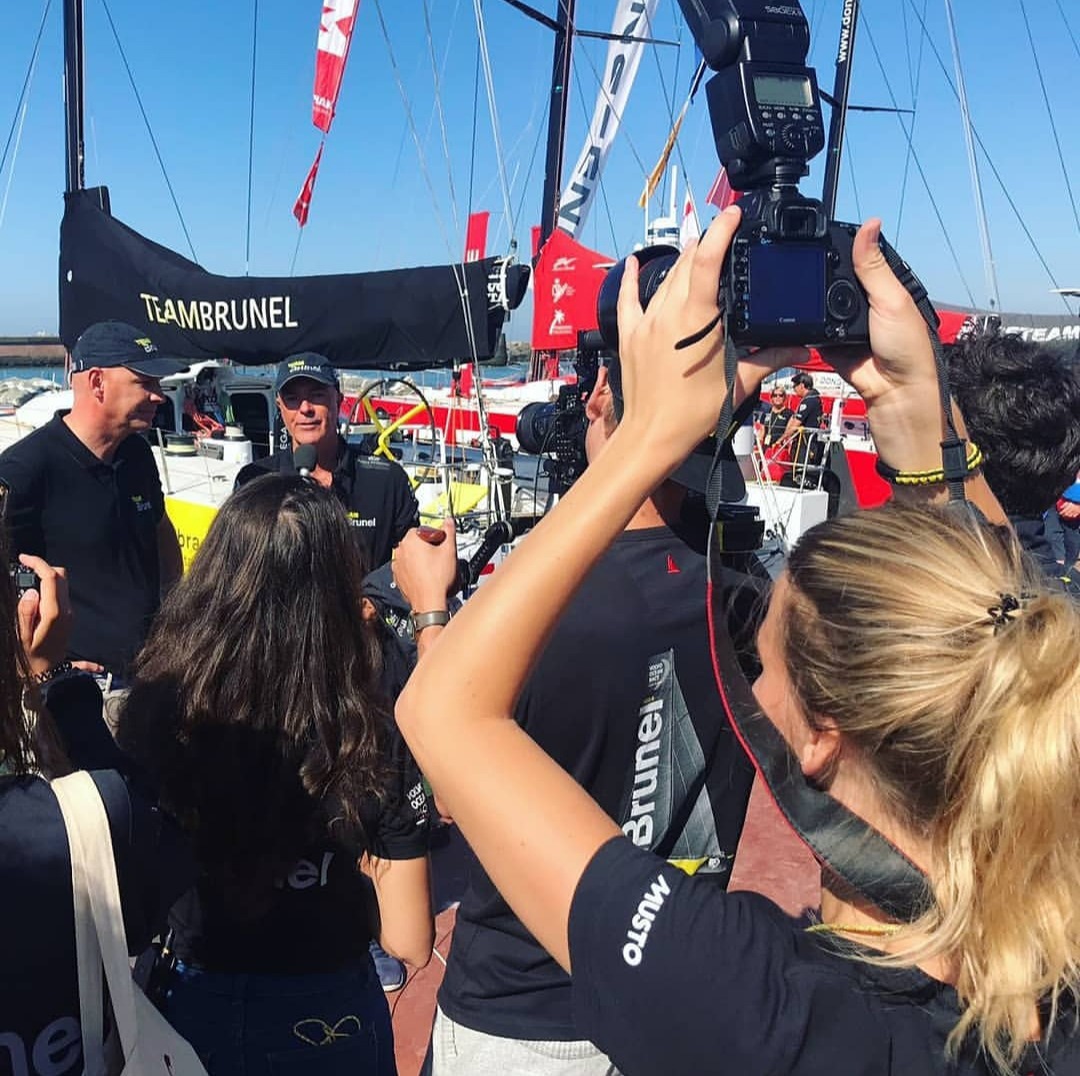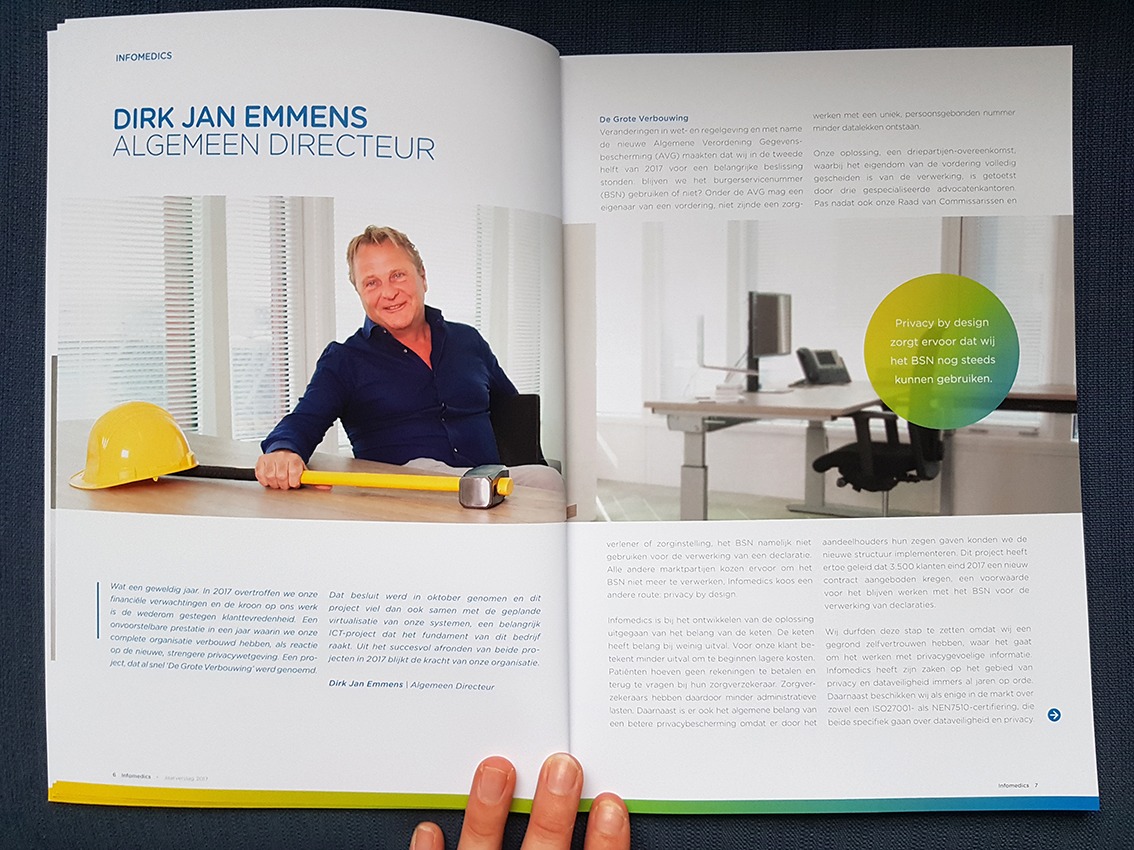*Brand identity
Developing the visual identity of a brand: photography and video

When I say “a painting of a melting clock,” you immediately think “Salvador Dali!” And when you see a commercial with a shark behind a breaking aquarium glass, you know it’s an advertisement for “even Apeldoorn bellen.” Or an explicit, sexually suggestive photo of an (almost) naked woman with a man in a suit? That’s definitely Suitsupply. You effortlessly associate these images with the right brands. This is what makes film and photography essential components of a visual identity. In this article, I will discuss how you can ensure that imagery strengthens your brand.
Definition of Visual Identity
Visual identity combines all the visual aspects of brand identity, communicating the feelings and experiences that align with a brand’s positioning. Visual aspects include elements like logos, fonts, colors, design, photography, and video.
Brand Identity vs. Visual Identity
The terms brand identity and visual identity are often used interchangeably. Therefore, I will briefly explain both terms before delving into what you should consider when selecting or creating images for your brand. This is an area where many businesses can significantly improve and reap many benefits.

We filmen een gesprek tussen Edwin ter Velde, Clean2Antarctica, en Thom van Oss van Apex Dynamics
The visual identity is a crucial part of brand identity. Brand identity is how you present your brand, including the story and underlying principles (mission, promise, core values), through various elements such as text, tone of voice, visual identity, campaigns, strategy, and more.
When people think about visual identity, they often focus on the logo, colors, or product design—the so-called corporate identity. However, photography and video also play essential roles in a brand’s visual identity. In this article, I’ll discuss the imagery you use to represent your brand, emphasizing how it can reinforce your brand image and communicate your message more effectively.
Visual Language, Visual Identity, and Corporate Identity
Visual language encompasses all the elements that make something or someone instantly recognizable. The fact that you can immediately identify an advertisement from Hema, Coolblue, Suitsupply, Apple, or Centraal Beheer Achmea without needing to see the brand name shows that they have a strong visual language. It’s similar to recognizing a painting by artists like Karel Appel, Salvador Dali, or Keith Haring. This recognition is achieved through a combination of individual components: color usage, technique, repetition/rhythm, the emotion the brand evokes, and the style it conveys (optimistic, humorous, surrealistic, fresh, simple, etc.).
Visual identity is a component of brand identity and, in essence, is synonymous with visual language. It focuses on the recognizability of a brand based on various visual elements and the associations it evokes. In the ideal scenario, visual identity and corporate identity are meticulously aligned.
Using Imagery as a Building Block for Visual Identity
How can a brand build its visual identity? There are various aspects that constitute visual identity or visual language, including:
1. Photography and Video
2. Stock Imagery
3. Image Archive
4. Budget
5. Role of Photography and Video in Visual Identity

Campagne van Suitsupply
Photography and video play a crucial role in shaping the associations and emotions people have about a brand. When you see images and can immediately recognize which brand they belong to without needing to see the brand name, it means the brand is doing something right. An example of this is the controversial campaigns by the clothing brand Suitsupply, which often feature clear, high-contrast, and colorful images.
We are all familiar with the “sex sells” concept. Some companies try to apply it subtly, while others embrace it unabashedly. I find the subtlety in which it’s not entirely clear a bit timid. Either you sell your product/service in a way that clearly conveys what it entails, the message it carries, and what you have to offer. If you decide to apply the “sex sells” principle, you might as well go all out with a clear and bold approach, complete with a playful wink.
Suitsupply falls into the latter category. They are not afraid of a bit of provocation, and this contributes to the recognizability of their campaign images. Their campaigns often feature provocative, erotic, and sometimes sexist images of partially or fully nude male and female models alongside models in suits. Sometimes the models are portrayed in submissive positions. This consistent use of erotic imagery has sparked debates about good taste versus bad taste, and opinions are divided. However, one thing is undeniable: you immediately recognize that these are Suitsupply campaigns. They receive substantial media attention and (free) publicity, whether positively or negatively. Their campaigns are characterized by innovation, youthfulness, controversy, clarity, colorfulness, high contrast, provocation, and often humor. They are socially engaged, rebellious, and stand out in various ways, making it clear: that’s Suitsupply.
Stock Photography

Ariane, hét stock-foto model
The list of disadvantages of using stock images is much longer than the list of advantages. The disadvantages include that stock images are often generic, unoriginal, cliché, and stereotypical. They tend to appear overly polished, posed, and lack a personal touch. They are not tailored to your (potential) customers and target audience. The only advantages I can think of are that they are cost-effective (sometimes even free) and quick to use.
If you choose to use stock photography because you have no time and no budget, be aware that the images you select can also be purchased by thousands of others, possibly for entirely different purposes or markets.
I recently read an article about a woman who, years ago, had a free portrait taken. She quickly (perhaps naively, as most would say) signed a release form. Years later, she discovered that her image had been used in various campaigns by different companies, sometimes with a completely different message or target market. It’s alarming how one can become entangled in such situations through deception and perhaps a bit of naivety. However, it also highlights that many stock images are so generic and interchangeable that they can be used in vastly different contexts.
Another piece I read was about Ariane (her middle name; her real name is Rebecca Givens). Ariane is the world’s most famous stock photo model, often referred to as the stock photo woman. She is a Canadian model who, at her peak, contributed to about 200 new stock photos per month. In a very short time, she appeared in 43 different Dutch advertisements for various brands, including Durex, Nationale Nederlanden, Vodafone, Cheaptickets, Kruidvat, Action, Ekoplaza, KLM, and Syntus.
Developing and Expanding Your Image Bank
An image bank, also known as an image archive, is a secure (often online) space where you have direct access to a collection of visual materials, such as high-resolution photographs and videos, as well as web-sized versions. Image banks are used by publishers, journalists, website developers, and marketing agencies like ours.
The advantages of an image bank include the ability to maintain consistency in your branding across all communication materials. You’ve established the look and quality required to meet your brand’s visual identity. Additionally, it is cost-effective. Asking a photographer to capture all the necessary images in one go is more efficient than repeatedly hiring a photographer for separate, small tasks. It also makes it easier to post news and updates since there is an ample supply of images available. With proper organization and categorization, an image bank provides a clear overview of the available images and identifies gaps in your collection.
Depending on your company’s size and needs, you can quickly and easily find files in a well-organized image bank. You can tag and categorize images by year, category, location, and creator. You can also extract various types of data, such as which files are frequently used and popular, how much storage space is being used, and what agreements exist regarding image usage and copyrights.
Maintaining an image bank is incredibly convenient. Even if you don’t see the immediate benefit, it serves as a valuable resource for various situations, such as presentations, whitepapers, reports, website content, advertisements, and campaigns. Sharing content online and in print media contributes to increased brand awareness and conversions.
Because photography and image selection have often taken a back seat due to budget constraints and time constraints, people opt for stock photography. In some cases, this is acceptable, but only in specific circumstances.

Filmen op het TT Circuit Assen voor onze klant Apex Dynamics
It’s a bit of a “pick your battles” situation for businesses. You can’t hire or send a photographer everywhere. Consider what significant events are relevant to your brand or what images are missing in your image bank. You might be able to achieve multiple goals at once by acquiring images for your website, annual report, and potential advertising and social media content. Think about important collaborations or sponsorships, prominent projects that perfectly showcase your business, and more.
Maintaining an image archive that you regularly update and expand is a wise choice. Companies essentially have no good excuse not to do this, given the improved quality of smartphone cameras and the proliferation of various photo and video apps. It’s easy and accessible to actively manage and supplement your image archive.
Additionally, it’s now easier to reach your target audience creatively and on a low budget. Think about platforms like Snapchat, Instagram, podcasts, live broadcasting, and more. With all these developments, you have the opportunity to create better and more beautiful content and use the possibilities creatively. The key is determining what you want to communicate, how to communicate it, and which channels to use.
If there is a budget for photography but the images are not distinctive (many images from KPN could be interchangeable with those from UPC, for example), it might also be due to the brief you write. Writing a good brief for a photographer or advertising agency is a challenge in itself.
Alternative Solutions in Case of Limited or Insufficient Budget
Budget often plays a significant role when it comes to photography and video, determining whether you have the freedom to dedicate time and attention to it. Do you opt for stock images or develop new visual content? And what do you do with all the images, where do you store them? How do you handle content creation? How actively do you maintain and supplement it?
If there is no budget, one crucial aspect remains: your creativity. Consider whether you know people who can contribute – perhaps photographers, filmmakers, or graphic designers in your network. If not, you can always create an action or contest to collect images. Many companies do this. For example, if you sell running shoes, you can ask people to submit images of their running moments, and the creators of the three most beautiful images win an all-expenses-paid weekend getaway (flight, hotel stay, participation in a sports event, or attending a race).
Collaborate with art academies and film schools, issue a call for proposals, come up with a publicity stunt or guerrilla action in public spaces that generates goodwill.
Furthermore, there are initiatives where you pay a certain amount based on your briefing and receive, for example, 30 designs (the number may vary depending on your budget) from emerging designers. You can then choose the most suitable design. For a relatively small fee, you have plenty to choose from, and you support emerging designers, even if not all of them deliver what you’re looking for; some of the designs may have potential. Photographers, designers, and other creatives might not appreciate the last tip.
and now?

The above text provides several valuable tips and tricks. Here’s a summary:
1. Pick your battles: Allocate your available budget wisely and consciously. Not everything deserves the same level of attention. Determine what speaks most to your business and what you want to highlight.
2. Engage your colleagues: Encourage your colleagues to create photos, videos, and content related to your company’s activities or anything relevant to your business. Once posted, it doesn’t hurt if the content is liked and shared, as this increases visibility.
3. Continuously expand your image archive: Even when there’s no immediate need, you can always use the content later.
4. Leverage your existing network: Identify individuals who have skills that can be beneficial to your content creation efforts, and consider what you can offer in return.
5. Be creative with a limited budget: Think of cost-effective ideas, such as running a photo contest or collaborating with relevant educational institutions and initiatives.
6. Explore low-budget concepts for public spaces: Develop low-cost initiatives or guerrilla marketing campaigns in public areas to generate goodwill and attention.
7. Utilize current image apps and channels: Stay up-to-date with trends, identify what suits your target audience, and publish your content accordingly.
Regardless of your approach, always keep your brand message and target audience in mind. Ensure the quality of your visuals, and question whether your audience recognizes your brand based on visual characteristics alone. If they see certain photos, products, fonts, or color schemes, can they identify your brand or company without seeing the name?
To emphasize the importance of a recognizable visual identity, consider the case of a company with a world-famous logo that decided to change it. In just two months, their revenue plummeted dramatically. They quickly reverted to their original logo, demonstrating the critical role of visual language and recognizability.
While stock photos may appear on your website, this blog contains only unique content (except for the example in the section specifically discussing stock photography). Let’s say that’s a starting point.
